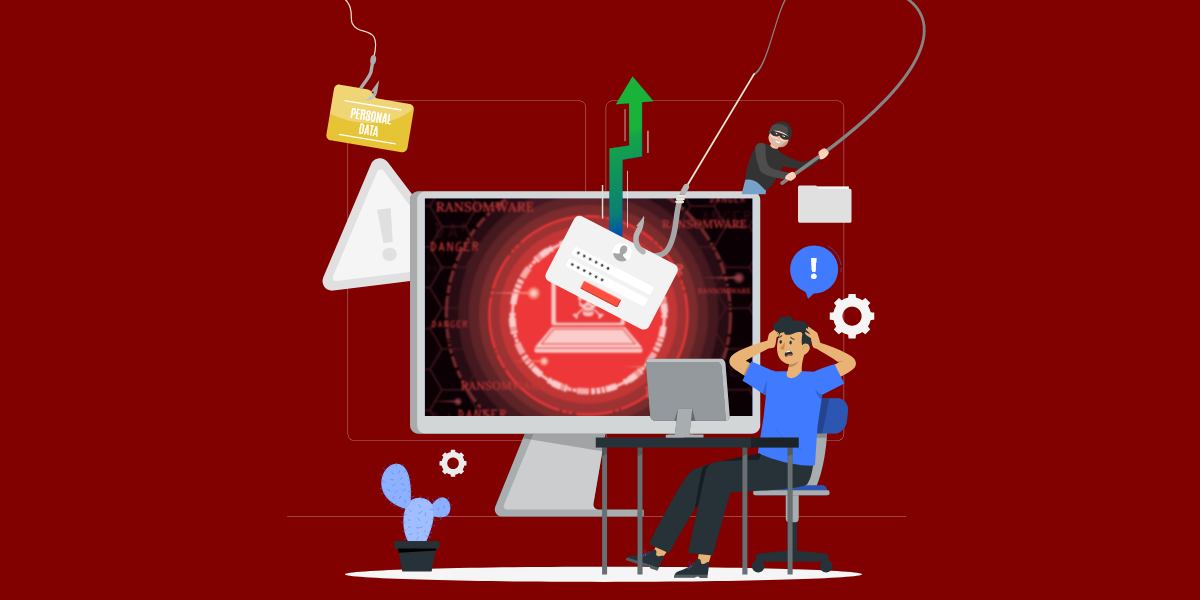Why is ransomware such a pervasive threat? Why do organizations go to any length to protect their data from it? Can an organization thwart an attack before it actually happens?
Well, this blog was written with just this in mind.
This blog gives an insight into the early warning signs of a ransomware attack and a few safety steps that you can take to protect your organization from such harm.
Ransomware is a malware that encrypts an organization’s files and data and denies access to the same till the payment of ransom. Threat actors place organizations in such a position that they will get complete access to all of their data and files only if the ransom is paid, which, however, is not true. Organizations do stand to lose out on some of their critical data despite ransom payment, your device will still be infected, you will be dealing with criminal groups and will be a likely target in the future too.
What happens if you have just been ransom-ed? Were there any early signs that you missed to notice and which could be a precursor to a ransomware attack.
Early warning signs of a ransomware attack
The signs listed below are only warning signs, not conclusive evidence of a potential ransomware attack. The signs include:
- Out of RAM
- Increase in RAM usage could mean ransomware is present on your network and doing its activity
- Hit in performance
- Unauthorized software installation
- These could be tools to assist with ransomware deployment
- Increase in failed login attempts
- System administrators may notice multiple unusual failed login attempts
- Phishing emails
- Suspicious emails luring users to download malicious attachments
- Security software removal
- Check if there have been any attempts to remove security software
- Network infiltration
- Check your system logs to see if there are suspicious network access
- Gaining domain access
- Check your logs to see if there are any suspicious elevation of system privileges
- Deployment of Tools for Credential stealing
- System administrators should check for tools such as Mimikatz, if installed, can be used to steal credentials
- Dry runs
- Check if there are any dry runs to exploit known vulnerabilities
- Unpatched Software
- It is recommended to patch all software as soon as a vulnerability is identified
- Exposed RDP Ports
- Threat actors scan for exposed RDP ports and gain access to the network using stolen credentials or brute-forcing their way into the network
- Inactive user accounts
- Threat actors could use these inactive user accounts to deploy ransomware
Protecting your organization from ransomware attacks
- Keep all your IT components patched against vulnerabilities and up-to-date
- Implement zero trust architecture
- Enable multi-factor authentication
- Identify searchable assets and limit their exposure
- Identify and protect your endpoints
- Delete sensitive data from endpoints that are no longer needed
- Secure all of your connected devices, change default passwords for the same
- Encrypt critical and sensitive data
- Install a reputable security product
- Prevent privilege escalation attacks
- Backup your critical data and ensure they are protected against deliberate deletion
- Disable macros in email attachments
- Train your employees regularly
Threat actors use ransomware mainly for financial gain or to damage the organization’s reputation in the industry. And even if threat actors do not get their money, they exfiltrate the data and release it, causing significant losses for the organization. So, it is better if organizations can stop the attack before it happens. This would become possible only if early warning signs like those listed above are identified and worked upon. Also organizations should follow the safety precautions mentioned above to stay protected.











